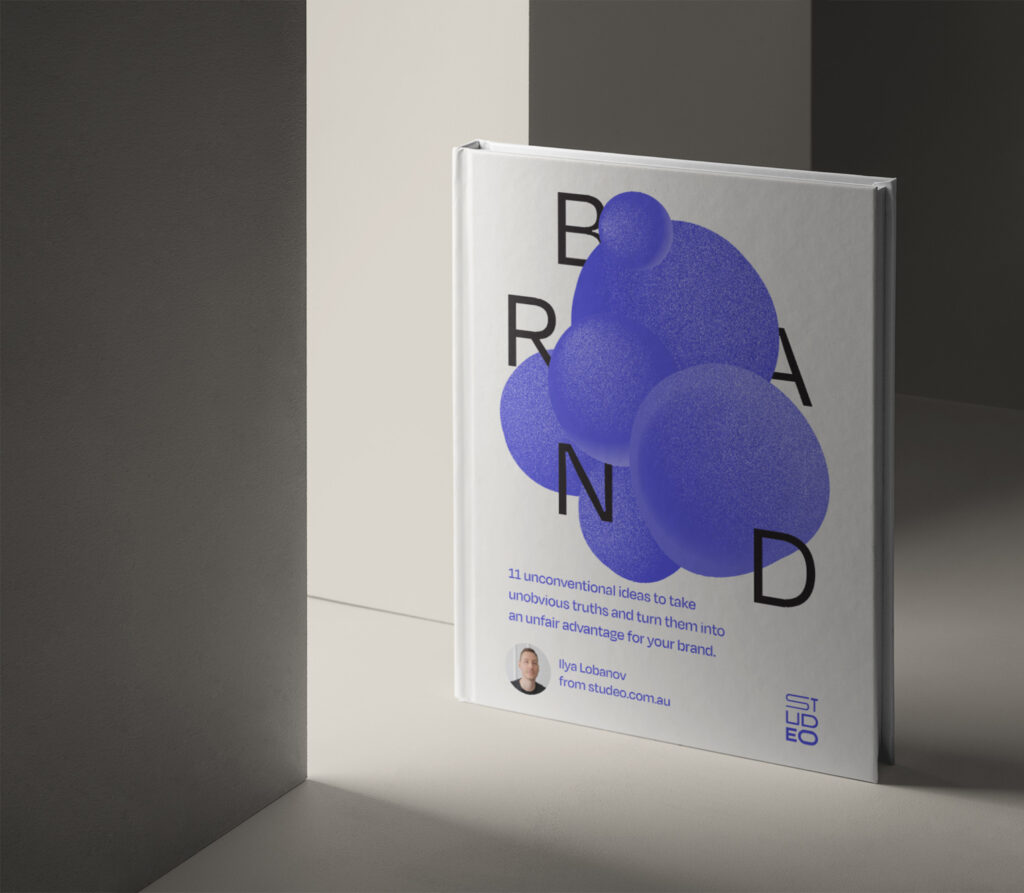An Unpopular Opinion on Brand Purpose

I remember when an Account Manager I worked with first brought in Simon Sinek’s Start With Why. We all read it. Then we rewatched the famous TED talk a dozen times. We were inspired. It made perfect sense.
However, over the next 8 years, my perspective has changed.
You might find my view shocking, controversial even. And plenty of brand consultants and LinkedIn keyboard warriors have criticised me for it.
Starting with the WHY is analogous to cooking an exotic dish.
First, you’ll need to find and then work with unusual ingredients. Then (if you’re an okay cook) you’ll follow the recipe to hopefully prepare something close to the intended original.
But chances are, you won’t find all the ingredients, substituting them for something else. And even if you do, the ingredients will be so unfamiliar to you that you won’t have the necessary know-how to give them the treatment they deserve. The dish won’t feel authentic.
Compare that to cooking a dish you love making, with ingredients you have used often and know exactly how to make every element shine.
And it’s not dissimilar to brand building. I’ve often found it more helpful to start with authentic ingredients rather than the why for the businesses I’ve worked with. Or in other cases, operating without a why until the business owners can discover it.
In the following article, I aim to provide you with an alternative view on what many might call brand purpose. If you found it challenging to articulate one in the past, whether for your brand or your clients’, you might find this valuable.
The case for starting with the why
The condensed summary of how starting with the why typically works in the brand-building world goes something like this.
You decide what matters to you as a business and as a brand. Something you can really stand behind. A deep purpose behind what you do.
From there, you look for a way of living through this purpose by establishing the how and the what. The actions and behaviors that will be necessary to realise the why (the how). And what you are going to do to fulfil that purpose (the what). In fact, ‘the what’ in that framework is often formulated as ‘something we just happen to do’.
Contrary to how many have interpreted it though (and in defence of the why framework), the purpose isn’t something that ‘you want to achieve beyond making profit’. It must also help to drive profit. So it’s not necessarily always about saving the whales, as we will see in the brand purpose examples of several well-known brands below.
To summarise, the main argument of this framework is that before you can establish what your brand values should be, and what you will do and how you will show up when you are at your best as a brand, you need to define a purpose first.
Brand purpose examples
As you look through some of these brand purpose examples, you will notice that they are all fairly short and succinct. The best ones are worded as being slightly out of reach. And somewhat ambiguous.
In a world of brands, what’s a purpose that can be easily achieved within one or two years?
Brands need something open-ended and flexible enough to always appear to be striving towards it. Regardless of the products they end up making or services they end up providing.
Technology company Dell provides this as their purpose: ‘We create technologies that drive human progress’. Notice they don’t call out personal computers OR saving the whales.
Likewise, Amazon doesn’t talk about solving world hunger. But it does appear to set the bar a bit higher. ‘Amazon strives to be Earth’s most customer-centric company, Earth’s best employer, and Earth’s safest place to work’.
Airbnb’s purpose is to ‘create a world where you can belong anywhere and where people can live in a place, instead of just traveling to it’. Interestingly enough, even though it was always about more than just travel, it was initially a way for the founders to pay their rent.
This brings me to a quick segue.
A story about my personal purpose
When I was growing up I didn’t really have a clear idea of what I wanted to do. And opportunities kind of fell in my lap.
When I was 9 or 10, my mother worked at a food kiosk. I often helped out by emptying her rubbish bin as she couldn’t leave the kiosk unattended.
Being a young entrepreneur, and recognising that other kiosk attendants could use my help I quickly made a ‘business’ out of it. Was it life-changing for those I helped? Not really. But I was good at it, it came easy, and I had no competition. And I did find a purpose by giving those kiosk attendants a rubbish-free environment for the day.
Fast forward 15 years, and I was hired as a website designer. I learned to code my first websites in Notepad by reverse engineering websites I liked. Not only could I design, but I could also write HTML code by hand. Eventually, the business owner asked me to project manage the developers the company hired. I found a calling in that too. It came not without challenges. But I discovered that too can become my purpose. So long as I find something about it that I like. And if I work at improving my skills in that area.
Unrelated as they might be, what those two short stories have taught me is that you can find purpose and passion in anything you do. And sometimes you can discover a purpose when you aren’t looking for it.
Which circles me back to Airbnb and their story. Rather than starting with the why, they started with a way to make money. And only through that, and by continuously trying to improve on what they had, they eventually landed on what they call their purpose today.
Brand purpose washing and controversy
The danger with starting with the why is purpose washing.
Suppose a business owner is looking for a brand strategy, a way to position their business. But they don’t really have a purpose for why they started the company. Or they can’t articulate it clearly (as we know from our own personal pursuits for passion, it can be hard to pinpoint).
An advertising or branding agency will almost inevitably try to come up with something sexy-sounding as a way to convince would-be customers that the business is putting people and the planet before their pockets. Because they’d wrongly assumed that a business that doesn’t have a brand purpose cannot thrive.
But as we know, we live in a complex world, and there is no one-size-fits-all solution out there. I side with the wise Mark Ritson – there is a time and place for purpose-driven brands, but it’s not a do-or-die box that brands have to tick to be successful.
Reverse engineering your why
Through my work with startups and SMEs, I have come to realise two things when it comes to brand purpose.
- It’s super useful to start with the why for founders who do have a strong purpose. Some of my clients started a business because a certain service was simply out of reach for most people and they wanted to democratise it. A pretty good purpose.
- It’s also okay to start a business simply because you want to deliver an existing service or product better than what already exists. Or simply because you ‘fell into’ an opportunity and turned out you’re great at it.
What I have found useful when working with businesses that didn’t have a purpose though, or those who couldn’t articulate it clearly is to ‘reverse engineer’ it.
Your typical ‘start with the why’ framework would have you drill down to your supposed purpose with the 5 Why’s Technique. We are here to make great computers – why – so that people can work better – why – people that work better can make their dreams a reality – why – when dreams are realised it enriches lives, and so on.
To me, this always seemed arbitrary. Generating a sexy-sounding purpose and then retrofitting your brand values (the how you do things) and your service/products (the what) to align with it.
This is why in my brand workshops and interactions with the clients I tend to reverse the order in which we talk about the brand strategy of a business. We first focus on the customer needs (what’s needed in the world and what do people need from the business). Then what we can do to deliver on that. And then how can we do this in a way that’s authentic to us, our culture, and our beliefs.
Often, in the process of talking about the customers and innate strengths of the business, my clients start to catch a glimpse of their purpose, a spark that has led them to the business idea or a turning point they had. For others, seeing their business through their customers’ eyes, they actually start to be able to articulate their why in a more authentic way.
Other times though, especially with my startup clients, we often learn that they need more time to run their business. To serve more customers. To get more feedback. To experiment with more opportunities. To pivot and adjust.
And only then to be able to discover their purpose. Not dissimilar to how Airbnb discovered their why.
In other words, uncovering what your strengths are and what you can do well authentically, and using that understanding to define your WHY. Rather than starting with an aspirational WHY and force-fitting the other ‘ingredients’ to work, trying to make your brand something it is not.
Bon Appétit
Enjoyed this article?
If you know someone who might enjoy this article, please share it. If you have any questions or would like a chat, please reach out, I’d love to hear from you! And if you found this article insightful consider joining me for an online event on the 6th of April 2022 ‘How to run strategic brand workshops’. You can get your ticket and learn more here.
